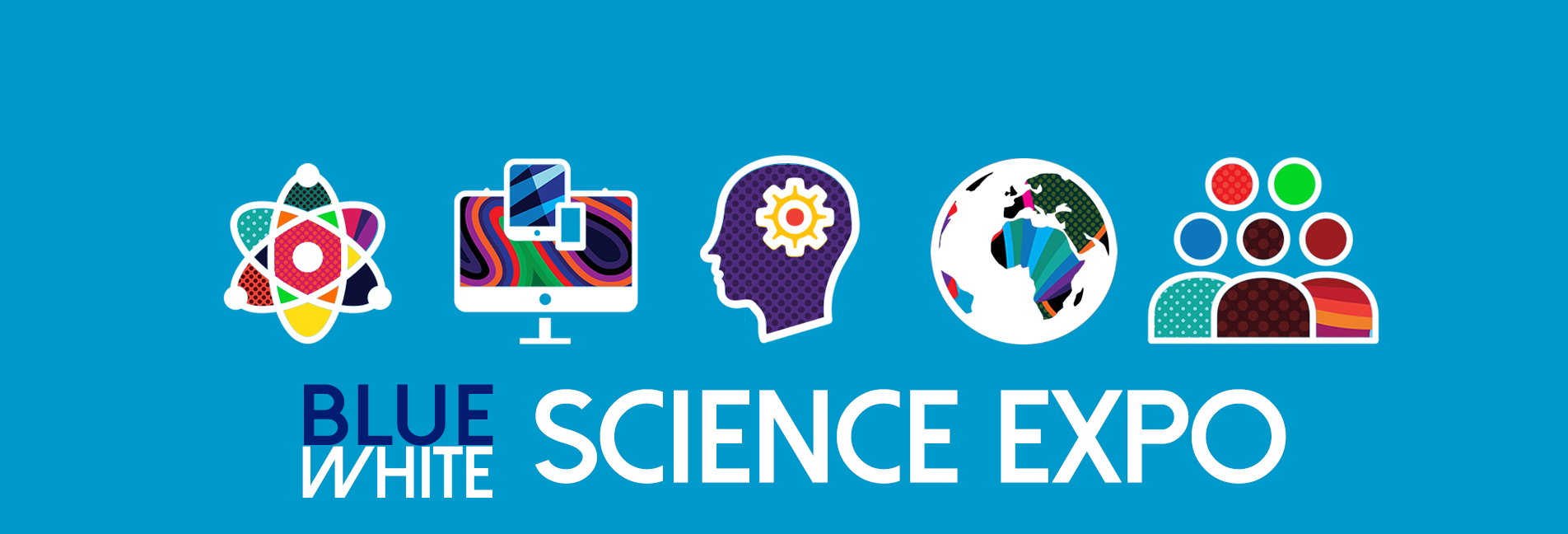Saturday, April 22, 2017 | 11:00 a.m. - 2:30 p.m.
The HUB | Heritage Hall & Freeman Auditorium
You're Invited!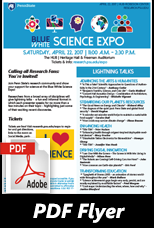
Join Penn State's research community and show your support for science at the Blue-White Science Expo!
The Science Expo will feature lightning talks in each of Penn State's five areas of focus: Enhancing Health, Stewarding our Planet's Resources, Driving Digital Innovation, Transforming Education, and Advancing the Arts & Humanities.
What's a lightning talk?
From 11 a.m. to 2:30 p.m., seventeen researchers from a broad array of disciplines will give short talks explaining just some of their exciting recent discoveries. Lightning talks are a fun and informal format in which each presenter speaks for no more than a few minutes on their topic - and then we rapidly switch to the next speaker. The speakers and their topics are listed below, as well as links to their homepages, so you can dive even deeper into a topic if you'd like!
How do I get tickets?
Tickets are free! Click here to register. We do ask that you pre-register so we can ensure seating is appropriately arranged. Feel free to attend whichever areas of focus are of the greatest interest to you. All ages are welcome, but the talks and presentations may be most interesting to those in middle school and older.
Accessibility: The HUB-Robeson Center is handicapped accessible. If you need additional accommodations, please email Amanda Snyder at ajs52@psu.edu prior to April 22.
Tell your friends!
Science is more fun together. Join our Facebook event here, and find fun social media shareables, profile pictures and event links you can use to show your support for science!
Program:
11:00 a.m. – Doors Open– Heritage Hall
11:15 a.m. - Welcome & Introduction - Neil Sharkey, Vice President for Research
11:30 a.m. – Advancing the Arts & Humanities
Heritage Hall
11:30 - "Is This a Fake? Scientific Approaches to Questions of Authenticity in the 21st Century" - Anthony Cutler
11:40 - "Benjamin Franklin, Science, and Civic Life" - Carla Mulford
11:50 - "Concert Hall Acoustics Design - Combination of Architecture, Psychology, & Engineering" - Michelle Vigeant
12:00 p.m. - 12:30 Break
Food is available is the HUB dining commons, or feel free to bring a lunch and enjoy a quick picnic outside. Please note that food is not allowed in Freeman Auditorium.
12:30 p.m. - Stewarding Our Planet's Resources
Heritage Hall
12:35 - "The Good News on Energy and Climate" - Richard Alley
12:45 - "The dogmas of the quiet past: Penn State and global food security" - David Hughes
12:55 - "A microbe eat microbe world helps to maintain a sustainable food supply" - Carolee Bull
1:05 - "How corals may survive climate change" - Iliana Baums
12:30 p.m. - Enhancing Health
Freeman Auditorium
12:35 - "Enhancing health through origami-inspired deployable medical devices" - Mary Frecker
12:45 - "Dissolvable Tattoo Electronics for Biomedicine" - Huanyu Cheng
12:55 - "Understanding the Rise in
Race/Ethnic Diversity" - Jennifer Van Hook
1:15 – 10 minute break / attendees may switch rooms if desired.
1:30 - Driving Digital Innovation
Heritage Hall
1:30 - "I am One With the Screen – The Screen is With Me: Living in Digital Media" - Nilam Ram
1:40 - "The Robots are Coming! Self-Driving Cars Are Here! Trusting Technology in the Digital Age and the Internet of Things" - John Sustersic
1:50 - "How common are Earth-size planets?" - Eric Ford
1:30 - Transforming Education
Freeman Auditorium
1:30 - "Spaghetti of Storms 2005 - an animation of storms worldwide throughout the year" - Mark Ballora
1:40 - "Science achievement gaps begin very early, persist, and are mostly explained by modifiable factors" - Paul Morgan
1:50 - "Cool maps: Understanding the when, where, how and why" - Justine Blanford
2:00 -- Regroup at Heritage Hall
2:15– Closing Comments – Heritage Hall
2:30– Program End
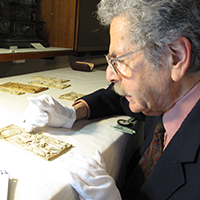
Anthony Cutler, Evan Pugh University Professor in Art History
"Is This a Fake? Scientific Approaches to Questions of Authenticity in the 21st Century"
11:30 a.m. - Heritage Hall
At a time when the skills of forgers across a wide variety of mediums are ever more sophisticated, and their creations command hundreds of thousands, if not millions, of dollars on the market, the need for objective means to detect them is all the more pressing. In the “old days” the connoisseur’s eye was considered a sufficient tool – except that connoisseurs often presented conflicting opinions and seem to have been unaware of the rampant contemporary manufacture of things that purported to be ancient. I consider one object – an ivory plaque depicting Jesus Christ – recently sold at auction and scrutinize it first using the traditional approach of comparative visual analysis and then in the light of radiocarbon dating of the material. For a variety of reasons, repeated tests of this sort yielded unsatisfactory answers. This failure does not disqualify the procedures involved in their own right, but it does point to the necessity of cooperation between scientists and humanists.
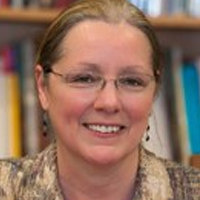
Carla Mulford, Professor of English and Founding President, Society of Early Americanists
"Benjamin Franklin, Science, and Civic Life"
11:30 a.m. - Heritage Hall
Today, we talk about the importance of science to civic life as if it were a relatively new concept. Yet the interconnections between these two has a long history in America, going back to Benjamin Franklin's pragmatic work in natural philosophy (what we today call science) and in politics, as he worked to secure the Treaty of Paris in 1783. The famous French philosopher and statesman, Turgot, said of Franklin that he "snatched lightning from the skies and the scepter from tyrants."
We might think of this as propaganda, but Turgot was right: Franklin succeeded as a diplomat where others (including John Adams) had failed, because Franklin could leverage his political goals (including the science of self-governance) with the significant weight of his scientific achievements, which were admired throughout Europe. Franklin capitalized on his scientific renown in order to shore up his efforts to create a treaty to conclude the American Revolution. Without the Treaty of Paris, for which Benjamin Franklin served as prime negotiator, the American colonies would not have been free to create states and, more importantly, the federal Constitution. I believe that if Franklin had not had such a significant reputation as a scientist, his political efforts would not have had such a signal achievement.
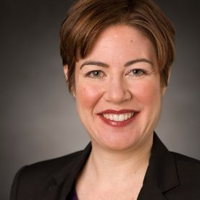
Michelle Vigeant, Assistant professor in the Graduate Program in Acoustics and Architectural Engineering
"Concert Hall Acoustics Design - Combination of Architecture, Psychology, & Engineering"
11:30 a.m. - Heritage Hall
The successful design of concert halls is often a delicate balance between having innovative architecture and still achieving excellent hall acoustics. Many perceptual attributes contribute to the overall impression of excellent acoustics. For example, “reverberance” – the perception of sound lingering in a space, “clarity” – the degree to which you can distinguish between individual notes, and “envelopment” – the sense of being completely surrounded by sound.
However, there is a gap in our understanding of the importance of each of these characteristics to the overall room acoustic quality. Researchers at Penn State are studying this topic to develop new design guidelines to improve future concert hall designs. Measurements have been taken in several regional halls and plans are underway to measure well-known halls throughout the United States and Europe. Using these measurements, listening tests are being conducted in a special listening facility on campus that has 30 loudspeakers that are installed in an anechoic (no-echoes) chamber. The relationship between the measurements and the listening tests are then evaluated to identify the influence of hall shape and surface finishes on the acoustics. These results will ultimately inform future designs, which will improve the quality of the concert experience for attendees and may also result in more cost-effective halls.
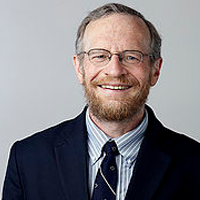
Richard Alley, Evan Pugh Professor, Department of Geosciences
"The Good News on Energy and Climate"
12:30 p.m. - Heritage Hall
Our ancestors burned trees and whales for energy far faster than they grew back, creating grave problems as the resource disappeared. We allowed the whales and trees to grow back only after we switched to fossil fuels. But, we are burning fossil fuels about a million times faster than nature saved them for us, and we must change. Strong scholarship shows that changing soon to a renewable energy system will improve the economy and employment as well as the environment. We are the first generation in history that knows how to become energy-rich, powering people today and far into the future. Work at Penn State is central to understanding and solving the challenges.
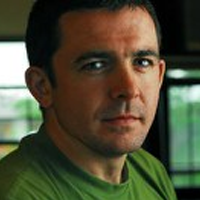
David Hughes, Assistant Professor of Entomology and Biology
"The dogmas of the quiet past: Penn State and global food security"
12:30 p.m. - Heritage Hall
The Land Grant system of Universities have been the driving force for American growth and dominance over the last 155 years. No modern nation has achieved industrial prominence without a robust agricultural basis. In the USA ,the Land Grants served that role and represent a unique experiment in higher education that has never been repeated, despite multiple attempts.
As the world lurches toward 9 Billion people and the need to feed them in the face of global climate change, what is the role of the American Land Grant System? In this talk I will argue that Penn State has already demonstrated leadership in global food security and is uniquely placed to do much more in this space. Our distinct capabilities across the agricultural, geological, engineering and social sciences, together with our reduced friction for collaborative work means we are exactly the type of institute that can meaningfully drive the science needed to tackle issues of food security. Lincoln's famous words on the dogmas of the quiet past being inadequate to the stormy present past are as true today as when they written in 1862 when the Land Grants formed.

Carolee Bull, Department Head and Professor of Plant Pathology and Systematic Bacteriology
"A microbe-eat-microbe world helps to maintain a sustainable food supply"
12:30 p.m. - Heritage Hall
Bacteria rot and destroy crops we use for food, forests and clothing. For example, bacteria can cause complete losses of crops like lettuce, broccoli, tomatoes and button mushrooms which means we pay more for the salad when growers pass the costs of those losses on to consumers.
But pathogens are not the only microorganisms on plants, in the environment, or on our plate. While bacterial pathogens are busy invading plants, there are other microbes, both bacterial and viral, that prey on and kill the plant pathogens, preventing them from causing disease. It is a microbe-eat-microbe world. Our favorite microbial predators are viruses that “eat” bacteria (bacteriophage) and slimy bacteria (myxobacteria) that hunt in ‘wolf packs’ to surround and kill other bacteria. Understanding how organisms interact in and with nature allows us to use these predators of pathogens to manage plant diseases for growers and should prevent us from playing whack-a-mole with the pathogens.
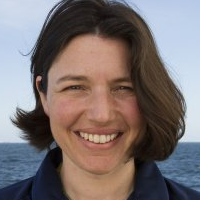
Iliana Baums, Associate Professor of Biology
"How corals may survive climate change"
12:30 p.m. - Heritage Hall
Corals are the animals that build coral reefs and protect shorelines from erosion and provide shelter for commercially important fish and invertebrates. Reefs therefore generate billions of dollars in economic value annually. Yet, corals are sensitive to even small changes in ocean temperature and have experienced increasing levels of mass mortality due to climate change. Just this summer large areas of Australia's Great Barrier Reef experienced more than 98% coral mortality. This sensitivity to environmental change drives our research our into potential mechanisms by which corals may survive increasing seawater temperatures. We have developed strategies on how to conserve the genetic diversity of corals as the most effective safeguard against extinction of these beautiful animals.
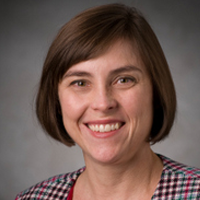
Mary Frecker, Professor of Mechanical & Biomedical Engineering and Associate Department Head for Graduate Programs in MNE
"Enhancing health through origami-inspired deployable medical devices"
12:30 p.m. - Freeman Auditorium
Pancreatic cancer is the 4th-most-deadly form of cancer among men and women in the United States, with an average five-year survival rate of just 7%. There is a great need for improved treatment methods; one problem with currently available needle-shaped probe tips, which are used to remove cancer via radiofrequency ablation (RFA), is that they do not typically produce an treatment zone that adequately covers the tumor and the surrounding area. This lack of coverage ultimately results in recurrence of the disease.
The goal of our work is to explore origami-inspired deployable probe tips that produce treatment zones which are optimally designed to match the size and shape of the tumor. The tips are also compatible with ultrasound-guided endoscopes (EUS). By improving treatment for abdominal tumors in general and pancreatic cancer in particular, we can improve the the dismal prognosis and enormous clinical burden that pancreatic cancer places on the health care community.
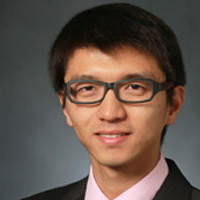
Huanyu (Larry) Cheng, Assistant Professor of Engineering Science and Mechanics; Materials Research Institute
"Dissolvable Tattoo Electronics for Biomedicine"
12:30 p.m. - Freeman Auditorium
Recent advances in electronics enable powerful biomedical devices that have greatly reduced therapeutic risks by monitoring vital signals and providing means of treatment. Implantable devices can help us better understand the behavior and effects of various diseases.
However, an additional procedure is required to remove the device after the initial implantation. Conventional electronics today form on brittle surfaces and are not compatible with the complex shape and texture of body tissues. Therefore, stretchable and absorbable electronics are the two missing links in the design process of implantable monitors and in-vivo therapeutics.
This talk presents the challenges, mechanics, and design strategies, behind a potential medical device that (a) integrates with human physiology, and (b) dissolves completely after its effective operation. Implanted devices will provide a much better understanding of organ functions and offer more time efficient treatments for serious diseases such as heart failure.
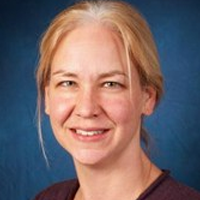
Jennifer Van Hook, Liberal Arts Research Professor of Sociology and Demography
"Understanding the Rise in Race/Ethnic Diversity"
12:30 p.m. - Freeman Auditorium
A common stereotype about rural areas is that most of the people living there are white. But research being done by demographers shows that racial and ethnic diversity is no longer confined to big cities. Rather, nearly all communities—98 percent of all U.S. cities, and nine out of 10 rural places —are becoming more diverse.
Another common idea is that the racial and ethnic diversity we see today stems from immigration. This was true in the past, but we are now entering a new era in which minority groups will soon be self-sustained by natural growth—births over deaths—rather than by new immigration. So at the end of the day, this means that Americans need to learn to live with diversity. Throughout history, notions of who belongs in American society have expanded again and again to incorporate new groups, and this can happen again for today's immigrants if they are given a fair chance.

Nilan Ram, Associate Professor, Human Development and Family Studies, and Psychology
"I am One With the Screen – The Screen is With Me: Living in Digital Media"
1:30 p.m. - Heritage Hall
Digital media on our phones and laptops allows us to switch among tasks, very fast and very often. We can press the pause button and then the play button on just about any experience – playing a game, shopping, writing a document, ordering pizza, texting with friends – and we press those buttons, on average, every 19 seconds. Using time-lapse movies, sonics, and data analytics, we illustrate how individuals’ daily transaction with the modern world is becoming both amazingly fragmented and incredibly integrated.
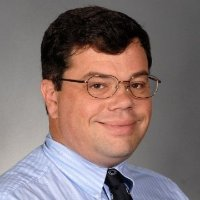
John Sustersic, Research Associate and Head, Autonomy, Perception and Cognition Department
"The Robots are Coming! Self-Driving Cars Are Here! Trusting Technology in the Digital Age and the Internet of Things"
1:30 p.m. - Heritage Hall
Transformative innovations in digital technologies are evolving society in unprecedented ways, often with unanticipated consequences. Artificial Intelligence and Machine Learning advances have resulted self-driving cars, game-playing computers that can beat the World’s best human experts, and widely interconnected devices that bring extraordinary capabilities in the hands of many people across the world. How are we to survive in this brave, digital world?
This talk will highlight ongoing work in developing smart and trustable robots, focusing on how such innovations and tremendously capable *tools* can greatly enhance our abilities to learn, develop, and improve quality of life in unprecedented ways - but not without risks and consequences. Understanding what these tools do, what they cannot do, and what risks are inherent in their use is essential to develop appropriate levels of trust in the technology and to succeed in the Digital Age and the Internet of Things.

Eric Ford, Professor, Astronomy & Astrophysics
"How common are Earth-size planets?"
1:30 p.m. - Heritage Hall
For centuries, humans have wondered whether distant stars harbor planets similar to our own. While pure curiosity motivates these science questions, answering them requires combining advances in astronomical instrumentation with state-of-the-art mathematical modeling, computational techniques and raw computing power.
Recently, astronomers have begun discovering potentially Earth-like planets around other stars. Ford will present recent results for the frequency of Earth-size planets around sun-like stars, and discuss how Penn State's Center for Exoplanets and Habitable Worlds is leading the charge to characterize such planets and to search for life beyond Earth. The associated research opportunities at Penn State prepare students for a wide variety of careers as faculty at universities, researchers in government labs, and, increasingly, as Data Scientists in industry; additionally, Penn State's Institute for CyberScience is leading a university-wide effort to promote cross-disciplinary, Cyber-enabled research, so that advances in computational modeling developed in one field can be harnessed by researchers in other fields.
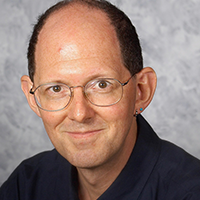
Mark Ballora, Associate Professor of Music Technology, School of Music/School of Theatre
"Spaghetti of Storms 2005 - an Animation and Sonification of Storms Worldwide Throughout the Year"
1:30 p.m. - Freeman Auditorium
Sit back and watch a global animation trace the progression of tropical storms throughout the year 2005 while a sound trail indicates its intensity, symmetry, latitude and longitude.
The mapping of storm characteristics to sound (sonification) adds a visceral dimension to visual presentation, making it more engaging to viewers and compelling, as well as providing information about the storms. By adding a sound track to science presentations that educates and informs through music, students are likely to form a more intuitive and holistic understanding of the material. If a generation of students is educated to regard science as something that is listened to as well as looked at, it could have significant impacts on the research environment twenty or thirty years down the line. Ballora created the sound trail based on data provided by meteorology professor Jenni Evans, and an animation created by Wade Shumaker of IST.
A version of this presentation is on display at the Earth and Mineral Sciences museum; Meteorology professor Jenni Evans, who commissioned the sonifications, has found that not only are the sonifications more engaging, but they can help observers understand aspects of storm systems that are not always clear from visual displays alone. Adding sonifications to scientific displays has the potential to advance discovery and understanding while promoting learning by engaging students through new modalities; broaden participation of under-represented groups by making information available to students with visual impairments or who are on the autism spectrum and have difficulty absorbing visual information; broaden dissemination to enhance scientific understanding by providing new multi-media modalities for presentations that make technical or arcane concepts understandable to lay audiences; and help engage and inform the general public about critical issues of science and responsible stewardship.
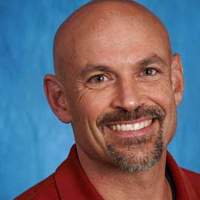
Paul Morgan, Professor, Department of Education Policy Studies, and Director, Center for Educational Disparities Research
"Science achievement gaps begin very early, persist, and are mostly explained by modifiable factors"
1:30 p.m. - Freeman Auditorium
Globally, the U.S. is at risk of declining economic competitiveness due to its continuing low levels of educational attainment in science, technology, engineering, and mathematics (STEM). One reason for this is a "leaky STEM pipeline" in which women, children from low-income facilities, and those who are racial or ethnic minorities often do not grow to pursue STEM careers, which would also allow for higher-paying employment and greater economic well-being, particularly as the U.S. transitions to a knowledge-based economy. Yet how early in schooling to the leaks in the STEM pipeline begin to occur? Most studies examining science achievement gaps have done so using samples of middle or high school studies.
To better understand the age of onset, over-time dynamics, and possible mechanisms contributing to science achievement gaps, we analyzed a nationally representative and longitudinal sample of U.S. schoolchildren followed from kindergarten entry to the end of middle school. Three surprising findings emerged. First, very large gaps in children's understanding of the world were already evident by the fall of kindergarten. In other words, leaks in the STEM pipeline were originating "close to the tap." Second, these gaps in kindergarten strongly predicted gaps in science achievement by third grade, which these predicted gaps from third to eighth grade. The third surprising finding was more encouraging. We found that we could explain most of the science achievement gaps. For example, we could explain 75% and 97% of the gap between Black and White children and low- and high-income children in their science achievement gaps, respectively. Factors that explained these gaps could be the target of efforts by parents, teachers, and policymakers, including children's reading and mathematics achievement, their behavior, and most, importantly, their early understandings about the general world. Helping young children, including before kindergarten, known more about their physical and social surroundings, may increase their science achievement as they grow older, and so may help "fix" the leaky STEM pipeline as well as better position the U.S. to remain economically competitive globally.
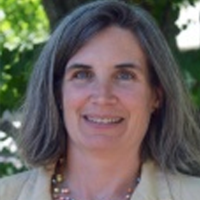
Justine Blanford, Assistant Professor, Dutton e-Education Institute, Department of Geography
"Cool maps: Understanding the when, where, how and why"
1:30 p.m. - Freeman Auditorium
As the old saying goes: pictures tell a thousand words. Maps and data visualizations play an important role in telling stories about us and our environment. These can be used to better understand the environment, explore relationships and help us make informed decisions. During this talk, we will learn about Geographic Information Systems (GIS) and how technologies that we use daily can be used to collect geographic data through GPS enabled mobile apps, wearable technologies and citizen science/volunteered geographic information. Examples will range from how social media can be used for crisis management, mapping local and international mobility, as well as for health analysis. By the end of the talk, the audience will learn about how cool maps are being used to make decisions and how they can learn more and get involved.
Parking
Parking in the HUB Deck is $1 per hour. Due to the Blue-White Football game at 3 p.m. on April 22, parking may be sparse - arrive early to get a spot!
Other campus parking will be available in the East or Eisenhower decks at regular rates: http://transportation.psu.edu/overnightweekend-event-parking
For Google Maps directions to the HUB, click here. The HUB is also close to Downtown State College, and metered spots are available along College Ave.
For Penn State faculty & Staff: RSVP an info booth

